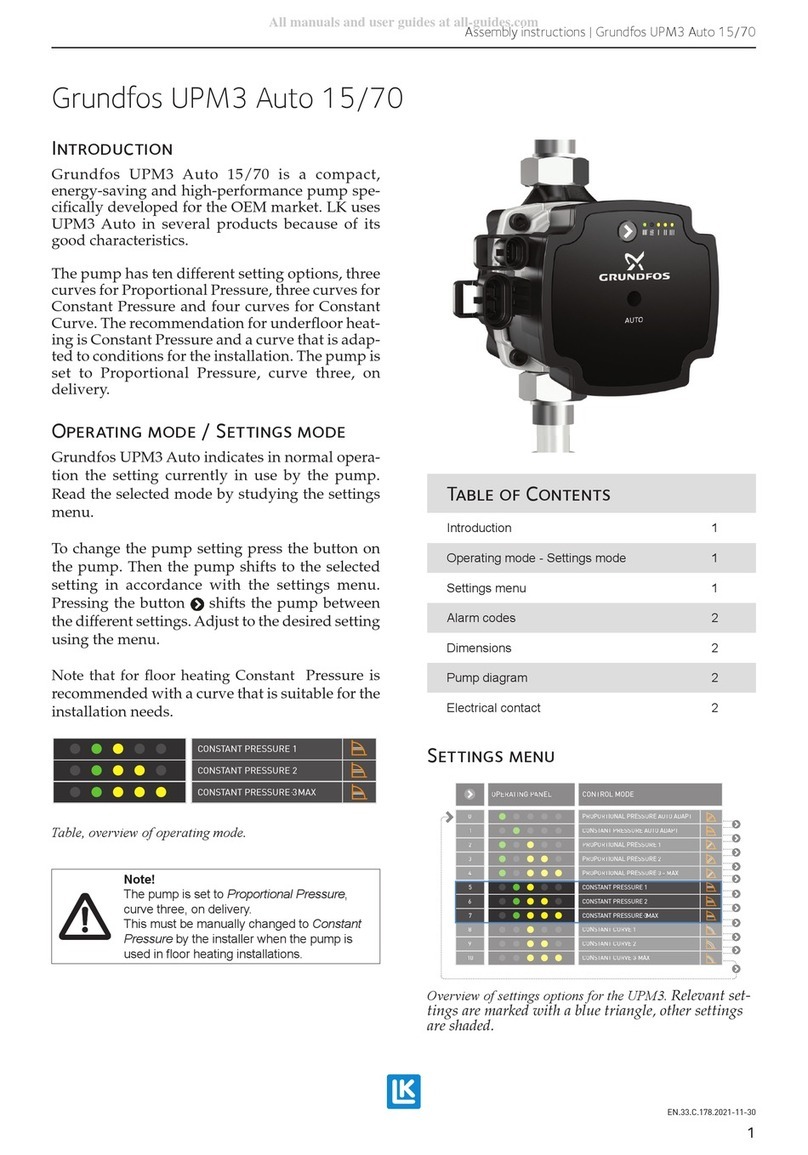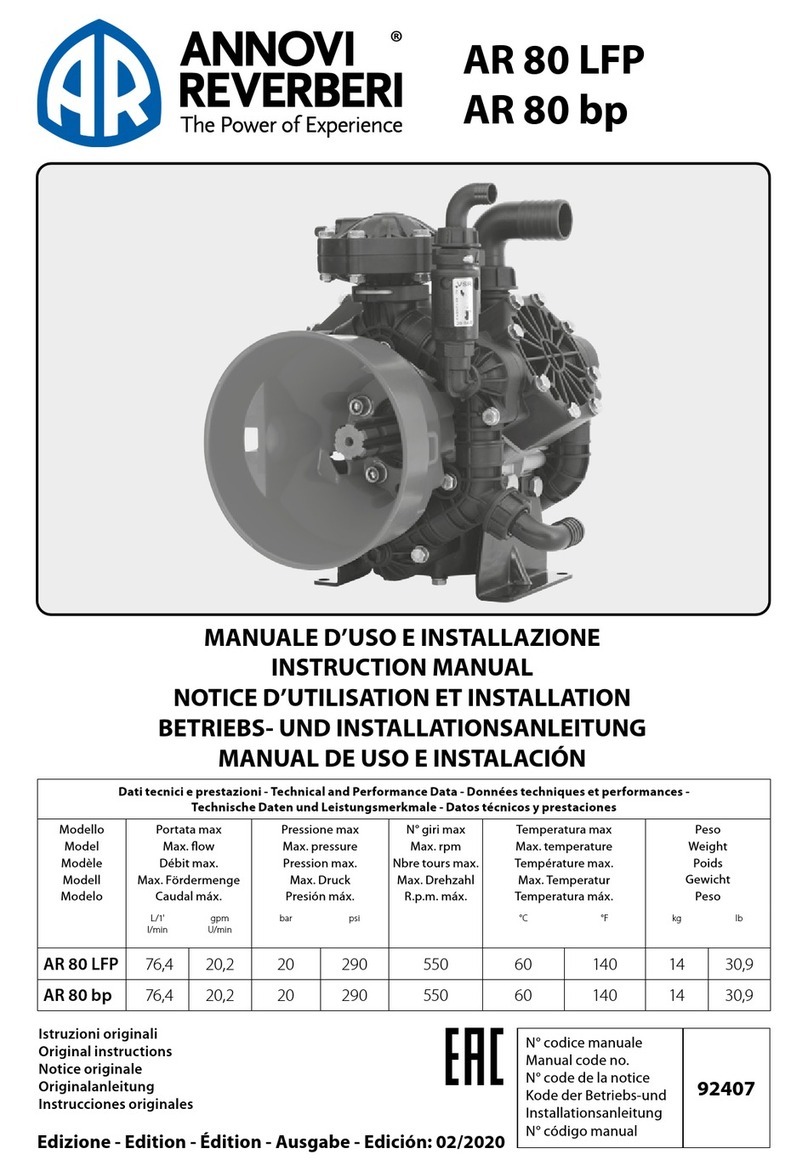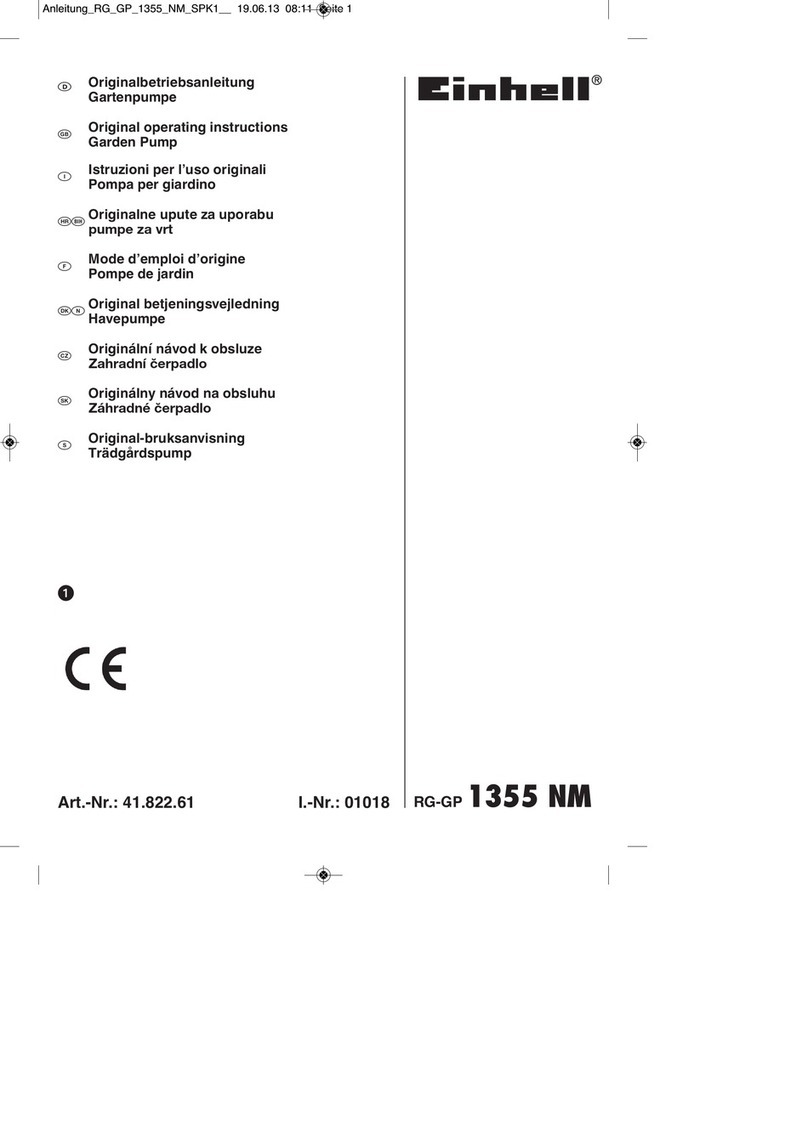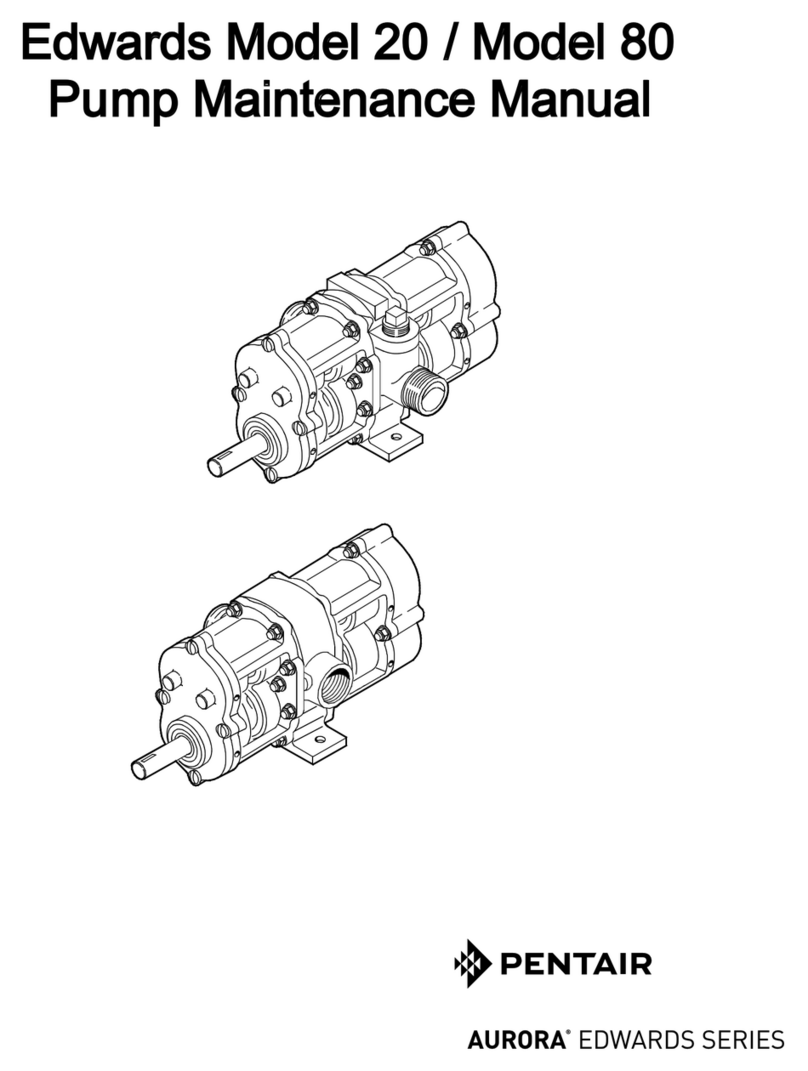Ningbo FPP-72743 User manual

OWNER’S
MANUAL
INSTALLATION, OPERATION, & PARTS
FPP-72743 / 72744
MANUFACTURED BY:
NINGBO SPLASH POOL APPLICANCE CO., LTD
To prevent potential injury and to avoid unnecessary service calls, read this manual
carefully and completely.
SAVE THIS INSTRUCTION MANUAL
Use of appointed replacement parts voids warranty.
ATTENTION INSTALLER –THIS MANUAL CONTAINS IMPORTANT INFORMATION ABOUT THE
INSTALLATION, OPERATION, AND SAFE USE OF THIS PUMP THAT MUST BE FURNISHED TO THE END
USER OF THIS PRODUCT. FAILURE TO READ AND FOLLOW ALL INSTRUCTIONS COULD RESULT IN
SERIOUS INJURIES.

Symbol means:
DANGER This symbol indicates that in case of failure it is a potential hazard: It will cause severe personal
injury or death or property
damage.
WARNING This symbol indicates that in case of failure it is a potential hazard: It could result in severe
personal injury or death or property damage.
CAUTION This symbol indicates that in case of failure it is a potential hazard: It will or could cause
moderate personal injury or
property damage.
CHAPTER One: IMPORTANT SAFETY INSTUCTIONS
READ AND FOLLOW ALL INSTRUCTION
WARNING Pay attention to children
1. To reduce risk of injury, do not permit children to use or climb on this product. Closely supervise children at all
times. Components such as the filtration system, pumps, and heaters must be positioned to prevent children from using
them as a means of access to the pool.
2. A permanently installed pool is constructed in or on the ground or in a building such that it cannot be readily
disassembled for storage. A storable pool is constructed so that it is capable of being readily disassembled for storage
and reassembled to its original integrity. These pump models are intended for use with permanent pools only –Do not
use with inflatable pools.
3. Though this product is designed for outdoor use, it is strongly advised to protect the electrical components from the
weather. Select a well-drained area, one that will not flood when it rains. It requires free circulation of air for cooling.
Do not install in a damp or non-ventilated location.
4. Pool components have a finite life. All components should be inspected frequently and replaced at least every five
years, or if found to be damaged, broken, cracked, missing or not securely attached.
WARNING Risk of Electric Shock.
5. Hazardous voltage. Can shock, burn, or cause death. To reduce the risk of electric shock, do NOT use an extension
cord to connect unit to electric supply. Provide a properly located outlet. It is required that licensed electricians do all
electrical wiring.
6. All electrical wiring MUST be in conformance with applicable local and national codes and regulations. Before
working on pump or motor, disconnect motor wiring.
7. Risk of Electric Shock. Connect only to a branch circuit protected by a ground-fault circuit-interrupter (GFCI).
Contact an electrician if you cannot verify that the receptacle is protected by a GFCI.
CONNECT ONLY TO GROUNDING TYPE RECEPTACLE PROTECTED BY A CLASS A GROUND FAULT
CIRCUIT INTERRUPTER.
8. Failure to bond pump to pool structure will increase risk for electrocution and could result in injury or death. To
reduce the risk of electric shock, see installation instructions and consult a professional electrician on how to bond
pump.
Also, contact a licensed electrician for information on local electrical codes for bonding requirements.
9. Use a solid copper conductor, size 8 or larger. Run a continuous wire from external bonding lug to reinforcing rod or
mesh. Connect a No. 8 AWG (8.4 mm2) solid copper bonding wire to the pressure wire connector provided on the motor
housing and to all metal parts of swimming pool and to all electrical equipment, metal piping (except gas piping), and
conduit within 5 ft. (1.5m) of inside walls of swimming pool.
IMPORTANT - Reference NEC codes for all wiring standards including, but not limited to grounding, bonding
and other general wiring procedures.
10. Do not install within an outer enclosure.
SAVE THESE INSTRUCTIONS.

WARNING Suction Entrapment Hazard.
11. Suction in a suction inlet and/or suction inlet cover, which are damaged, broken, cracked, missing, or unsecured
cause severe injury and/or death due to the following entrapment hazards:
Hair Entrapment- Hair can become entangled in suction inlet cover.
Limb Entrapment- A limb inserted into an opening of a suction inlet or in a suction inlet cover that is damaged,
broken, cracked, missing, or not securely attached can result in a mechanical bind or swelling of the limb.
Body Suction Entrapment- A pressure applied to a large portion of the body or limbs can result in an entrapment.
Evisceration/ Disembowelment- A negative pressure applied directly to the intestines through an unprotected suction
inlet sump or in a suction inlet cover which is damaged, broken, cracked, missing, or unsecured can result in
evisceration/disembowelment.
Mechanical Entrapment- There is potential for jewelry, swimsuits, hair decorations, fingers, toes, or knuckles to be
caught in an opening of a suction inlet cover resulting in mechanical entrapment.
WARNING To Reduce the risk of Entrapment Hazards:
12. When inlets are small enough to be blocked by a person, a minimum of two functioning suction inlets per pump
must be installed. Suction inlets in the same plane (i.e. floor or wall), must be installed a minimum of three feet (3’)
[0.91 meter] apart, as measured from near point to near point.
- Dual suction fittings shall be placed in such locations and distances to avoid “dual blockage” by a user.
- Dual suction fittings shall not be located on seating areas or on the backrest for such seating areas.
- The maximum system flow rate shall not exceed the values shown in the “Pipe Sizing Chart” found in this manual.
- Never use pool if any suction inlet component is damaged, broken, cracked, missing, or not securely attached.
- Replace damaged, broken, cracked, missing, or not securely attached suction outlet components immediately.
- Installation of a vacuum release or vent system, which relieves entrapping suction, is recommended.
WARNING Hazardous Pressure.
13. Pool water filtration systems operate under hazardous pressure during start-up, normal operation, and after pump
shut-off. Stand clear of filtration system equipment during pump start-up. Failure to follow safety and operation
instructions could result in violent separation of the pump housing and cover due to pressure in the system, which
could cause property damage, severe personal injury, or death. Before servicing pool water filtration system, the pump
must be in off position and the filter manual air relief valve (not available on sand filter, only for cartridge filter) must
be in open position. Before starting the pump, all valves must be set in a position to allow water to circulate in the
pool. Do not change filter control valve position while system pump is running. Before starting the pump, fully open
filter manual air relief valve (not available on sand filter, only for cartridge filter). Do not close filter manual air relief
valve until a steady stream of water (not air or air and water) is discharged. All suction and discharge valves MUST be
OPEN when starting the filtration system. Failure to do so could result in severe personal injury and/or property
damage.
WARNING Separation Hazard.
14. Failure to follow safety and operation instructions could result in violent separation of pump components. Strainer
cover must be properly secured to pump housing with strainer cover lock ring. Before servicing pool filtration system,
the pump must be in off position and filter manual air relief valve (not available on sand filter, only for cartridge filter)
must be in open position. Do not operate pool filtration system if a system component is not assembled properly,
damaged, or missing. Do not operate pool filtration system unless filter air relief valve body is in locked position in
filter upper body. All suction and discharge valves MUST be OPEN when starting the filtration system. Failure to do
so could result in severe personal injury and/or property damage.
15. Never operate or test the circulation system at more than 40 PSI.
WARNING Fire and burn hazard.
16. Motors operate at high temperatures and if they are not properly isolated from any flammable structures or foreign
debris they can cause fires, which may cause severe personal injury or death. It is also necessary to allow the motor to
cool for at least 20 minutes prior to maintenance to minimize the risk for burns.

CHAPTER Two: Installation Instructions
WARNING This product should be installed and serviced only by a qualified professional.
1.
Pump Location
DO NOT install pump in a damp or non-ventilated location.
Keep motor clean. Pump motor requires free circulation of air for cooling.
2.
Pump Mounting
Install pump on a firm, level base or pad to meet all local and national codes. Fasten pump to base or pad with screws or
bolts to further reduce vibration and stress on pipe or hose joints. The base MUST be solid, level, rigid, and vibration
free.
Pump mount must:
- Allow pump inlet height to be as close to water level as possible.
- Allow use of short, direct suction pipe (to reduce frictionlosses).
- Allow for gate valves in suction and dischargepiping.
- Be protected from excess moisture and flooding. Allow adequate access for servicing pump and piping.-
- Make sure suction joints are tight. Suction pipe should be as large or larger than discharge pipe.
Pipe Sizing Chart
WARNING Hazardous Pressure.
Pumps, filters, and other equipment/ components of a swimming pool filtration system operate under pressure.
Incorrectly installed and/or improperly tested filtration equipment and/or components may fail resulting in injury
and/or property damage.
3.
Plumbing
Use Teflon tape to seal threaded connections on molded plastic components. All plastic fittings must be new or
thoroughly cleaned before use. NOTE - Do NOT use Plumber’s Pipe Dope as it may cause cracking of the plastic
components. When applying Teflon tape to plastic threads, wrap the entire threaded portion of the male fitting with
one to two layers of tape. Wind the tape clockwise as you face the open end of the fitting, beginning at the end of the
fitting. The pump suction and outlet ports have molded-in thread stops. Do NOT attempt to force hose connector
fitting past this stop. It is only necessary to tighten fittings enough to prevent leakage. Tighten fitting by hand and
then use a tool to engage fitting an additional 1 ½ turns. Use care when using Teflon tape as friction is reduced
considerably; do NOT over-tighten fitting or you may cause damage. If leaks occur, remove connector, clean off
old Teflon tape, re-wrap with one to two additional layers of Teflon tape, and re-install connector.
4.
Fittings
Fittings restrict flow. For better efficiency, use the fewest possible fittings (but at least two suction outlets). Avoid
fittings that could cause an air trap. Pool fittings MUST conform to the International Association of Plumbing and
Mechanical Officials (IAPMO) standards. Use a non-entrapping suction fitting in pool (multiple drains) or double
suction (skimmer and main drain).
CHAPTER Three: Electrical
1.
Ground and bond motor before connecting to electrical power supply. Failure to ground and bond pump motor can
cause serious or fatal electrical shock hazard.
2.
Do NOT ground to a gas supply line.
3.
To avoid dangerous or fatal electrical shock, turn OFF power to motor before working on electrical connections.
4.
Ground Fault Circuit Interrupter (GFCI) tripping indicates electrical problem. If GFCI trips and won’t reset,

consult electrician to inspect and repair electrical system.
WARNING Fire Hazard.
5.
Match supply voltage to motor nameplate voltage.
Insure that the electrical supply available agrees with the motor’s voltage, phase, and cycle, and that the wire size is
adequate for the H.P. (KW) rating and distance from the power source.
NOTE - All electrical wiring MUST be performed by a licensed electrician, and MUST conform to local codes
and NEC regulations. Use copper conductors only.
6.
Voltage
Voltage at motor MUST NOT be more than 10% above or below motor name plate rated voltage, or motor may
overheat, causing overload tripping and reduced component life. If voltage is less than 90% or more than 110% of
rated voltage when motor is running at full load, consult Power Company.
7.
Grounding and Bonding
Install, ground, bond, and wire motor in accordance with local or national electrical code requirements.
Permanently ground motor. Use green ground terminal provided under motor canopy or access place; use size and
type wire required by code. Connect motor ground terminal to electrical service ground. Bond motor to pool
structure. Bonding will connect all metal parts within and around the pool with a continuous wire.
Bonding reduces the risk of a current passing between bonded metal objects, which could potentially cause
electrical shock if grounded or shorted.
Reference NEC codes for all wiring standards including, but not limited to, grounding, bonding
and general wiring procedures.
Use a solid copper conductor, size 8 or larger. Run wire from external bonding lug to reinforcing rod or mesh.
Connect a No. 8 AWG (8.4 mm2) solid copper bonding wire to the pressure wire connector provided on the motor
housing and to all metal parts of swimming pool and to all electrical equipment, metal piping (except gas piping),
and conduit within 5 ft. (1.5 m) of inside walls of swimming pool.
WARNING All wiring must be done by a licensed electrician.
8.
Wiring
Pump MUST be permanently connected to circuit. If other lights or appliances are also on the same circuit, be sure
to add their amp loads before calculating wire and circuit breaker sizes. Use the load circuit breaker as the Master
On-Off switch.
Install a Ground Fault Circuit Interrupter (GFCI) in circuit; it will sense a short circuit to ground and disconnect
power before it becomes dangerous to pool users. For size of GFCI required and test procedures for GFCI, see
manufacturer’s instructions. In case of a power outage, check GFCI for tripping, which may prevent normal pump
operation. Reset if necessary.
CONNECT ONLY TO A GROUNDING RECEPTACLE PROTECTED BY A TYPE ‘’A’’ GROUND FAULT
CIRCUIT INTERRUPTER。(GFCI)
NOTE - If you do not use conduit when wiring motor, be sure to seal wire opening on end of motor to prevent
dirt, bugs, etc., from entering. A wiring diagram is attached on motors for permanently-connected models.
CAUTION:For continued protection against possible electric shock use only original replacement parts
when servicing.

CHAPTER Four: Start-Up & Operation
Prior to Start-Up
Notice: If it is necessary to perform a pressure test, prior to initial use to ensure pump is functioning properly,
then the following criteria should be maintained for this test:
1.
Have a professional perform this test.
2.
Ensure all pump and system components are sealed properly to preventleaks.
3.
Remove any trapped air in the system by fully opening filter manual air relief valve until a steady stream of water is
discharged.
4.
Allow no more than 40 psi (276 kPa) at a water temperature no higher than 100ºF (38 ºC).
5.
Run pressure test for no longer than 24 hours. Immediately inspect all parts to verify they are intact and
functioning properly. Fill strainer housing with water to suction pipe level. NEVER OPERATE THE PUMP
WITHOUT WATER. Water acts asa coolant and lubricant for the mechanical shaftseal.
WARNING If pump is being pressure tested (40 PSI MAXIMUM PRESSURE), be sure pressure has been released,
using the filter manual air relief valve (not available on sand filter, only for cartridge filter), before removing strainer
cover.
CAUTION NEVER run pump dry. Running pump dry may damage seals, causing leakage, flooding, and voids
warranty. Fill strainer housing with water before starting motor.
6.
Do NOT add chemicals to pool system directly in front of pump suction. Adding undiluted chemicals may damage
pump and voids warranty.
7.
Before removing strainer cover:
-STOP PUMP before proceeding.
-CLOSE VALVES in suction and outlet pipes.
-RELEASE ALL PRESSURE from pump and piping system using filter manual air relief valve (not available on
sand filter, only for cartridge filter). See filter owner’s manual for more details.
Priming Pump
CAUTION All suction and discharge valves MUST be OPEN, as well as filter air relief valve (not available on
sand filter, only for cartridge filter) on filter, when starting the circulating pump system. Failure to do so could result
in severe personal injury.
-Release all pressure from filter, pump, and piping system. See filter owner’s manual.
-If water source is higher than the pump, pump will prime itself when suction and outlet valves are opened.
-If water source is lower than the pump, unscrew and remove strainer cover; fill strainer housing withwater.
-Clean and lubricate strainer cover O-ring each time it is removed. Inspect O-ring and re-install on strainer cover.
-Replace strainer cover on strainer housing; turn clockwise to tightencover.
NOTE - Tighten strainer cover by hand only (no wrenches).
CAUTION Turn on power and wait for pump to prime, which may take up to five (5) minutes. Priming time will
depend on vertical length of suction lift and horizontal length of suction pipe. If pump does NOT prime within five
minutes, stop motor and determine cause. Be sure all suction and discharge valves are open when pump is running.
See Troubleshooting Guide. Wait five (5) seconds before re-starting pump. Failure to do so may cause reverse
rotation of motor and cause serious pump damage. Close filter manual air relief valve after pump is primed.
CHAPTER Five: Maintenance
Clean strainer basket regularly. Do NOT strike basket to clean. Inspect strainer cover gasket regularly and replace
as necessary. Pumps have self-lubricating motor bearings and shaft seals. No lubrication is necessary.
Keep motor clean. Insure air vents are free from obstruction to avoid damage. Do NOT use water to hose off motor.
Occasionally, shaft seals must be replaced, due to wear or damage. Replace with seal assembly kit with genuine parts.
See “Shaft Seal Change Instructions” in this manual.
CHAPTER Six: Storage/Winterization

WARNING Separation Hazard.
1.
Do not purge the system with compressed air. Purging the system with compressed air can cause components to
explode, with risk of severe injury or death to anyone nearby. Use only a low pressure (below 5 PSI), high volume
blower when air purging the pump, filter, or piping.
2.
Allowing the pump to freeze will void thewarranty.
3.
Use ONLY propylene glycol as antifreeze in your pool system. Propylene glycol is nontoxic and will not damage
plastic system components; other anti-freezes are highly toxic and may damage plastic components in the system.
4.
Drain all water from pump and piping when expecting freezing temperatures or when storing pump for a long time
(see instructions below).
5.
Keep motor dry and covered during storage. To avoid condensation/corrosion problems, do NOT cover or wrap
pump with plastic film or bags.
Storing Pump For Winterization
WARNING To avoid dangerous or fatal electrical shock hazard, turn OFF power to motor before draining pump.
Failure to disconnect power may result in serious personal injury or death.
1.
Drain water level below all inlets to the pool.
2.
Remove drain plugs from bottom of strainer body, and remove strainer cover from strainer housing.
3.
Disconnect pump from mounting pad, wiring system (after power has been turned OFF), and piping system.
4.
Once the pump is removed of water, re-install the strainer cover and drain plugs. Store pump in a dryarea.
Shaft Seal Change Instructions
IMPORTANT SAFETY INSTRUCTIONS, PLEASE READ AND FOLLOW ALL INSTRUCTIONS.
When servicing electrical equipment, basic safety precautions should always be observed including the following.
Failure to follow instructions may result in injury.
A.
To reduce risk of injury, do not permit children to use this product.
B.
Disconnect all electrical power service to pump before beginning shaft sealreplacement.
C.
Only qualified personnel should attempt rotary seal replacement. Contact your local authorized Dealer or service
center if you have any questions.
D.
Exercise extreme care in handling both the rotating and the stationary sections of the two-part replacement seal.
Foreign matter or improper handling will easily scratch the graphite and ceramic sealingsurfaces.
CHAPTER Seven: Troubleshooting
A.
Motor Will NOT Start –Check For:
Make sure the terminal board connections agree with the wiring diagram on motor data plate label. Be sure motor is
wired for available field supply voltage (see pump operating label).
1.
Improper or loose wiring connections; open switches or relays; tripped circuit breakers, GFCI’s, or blown fuses.
Solution: Check all connections, circuit breakers, and fuses. Reset tripped breakers or replace blown fuses.
2.
Manually check rotation of motor shaft for free movement and lack ofobstruction.
Solution: Refer to “Shaft Seal Change Instructions” in this manual.
3.
If you have a timer, be certain it is working properly. Bypass it ifnecessary.
B.
Motor Shuts OFF –Check For:
1.
Low voltage at motor or power drop (frequently caused by undersized wiring or extension corduse).
Solution: Contact qualified professional to check that the wiring gauge is heavy enough.
NOTE - Your pump motor is equipped with an “automatic thermal overload protector.” The motor will automatically
shut off if power supply drops before heat damage can build up causing windings to burn out. The “thermal overload
protector” will allow the motor to automatically restart once the motor has cooled. It will continue to cut On/Off
until the problem is corrected. Be sure to correct cause of overheating.
C.
Motor Hums, But Does NOT Start –Check For:
1. Impeller jammed with debris.
Solution: Have a qualified repair professional open the pump and remove the debris.
D.
Pump Won't Prime, Check For:

1.
Empty pump/strainer housing.
Solution: Make sure pump/strainer housing is filled with water and cover O-ring is clean. Ensure O-ring is
properly seated in the cover O-ring groove. Ensure O-ring is lubricated and that strainer cover is locked firmly in
position.
Lubricant will help to create a tighter seal.
2.
Loose connections on suction side.
Solution: Tighten pipe/union connections.
NOTE - Any self-priming pump will not prime if there are suction air leaks. Leaks will result in bubbles emanating
from return fittings on pool wall.
3.
Leaking O-ring or packing glands onvalves.
Solution: Tighten, repair, or replace valves.
4.
Strainer basket or skimmer basket loaded withdebris.
Solution: Remove strainer housing cover or skimmer cover, clean basket, and refill strainer housing with water.
Tighten cover.
5.
Suction side clogged.
Solution: Contact a qualified repair professional.
a.
If pump develops a vacuum, check for blocked suction line or dirty strainer basket. An air leak in the suction
piping may be the cause.
b.
If pump does not develop a vacuum and pump has sufficient “priming water”:
- Re-check strainer housing cover and all threaded connections for suction leaks. Check if all system hose clamps
are tight.
- Check voltage to ensure that the motor is rotating at fullRPM’s.
- Open housing cover and check for clogging or obstruction in suction.
- Check impeller fordebris.
- Remove and replace shaft seal only if it isleaking.
6.Make sure all suction and discharge valves are open and unobstructed, and that pool water level is above all
suction openings.
E.
Low Flow –Generally, Check For:
1.
Clogged or restricted strainer or suction line.
Solution: Contact a qualified repair professional.
2.
Undersized pool piping.
Solution: Correct piping size.
3.
Plugged or restricted discharge line of filter, valve partially closed (high gaugereading).
Solution: Sand filters –backwash as per manufacturer’s instructions; D.E. filters – backwash as per manufacturer’s
instructions; Cartridge filters –clean or replace cartridge.
4.
Air leak in suction (bubbles issuing from return fittings).
Solution: Re-tighten suction and discharge connections using Teflon tape. Inspect other plumbing connections and
tighten as required.
5.
Plugged, restricted, or damaged impeller.
Solution: Replace including new seal assembly.
F.
Noisy Pump –Check For:
1.
Air leak in suction piping, cavitation caused by restricted or undersized suction line or leak at any joint, low water
level in pool, and unrestricted discharge returnlines.
Solution: Correct suction condition or throttle return lines, if practical. Holding hand over return fitting will
sometimes prove this point or putting in a smaller eyeball fitting.
2.
Vibration due to improper mounting, etc.
Solution: Mount the pump on a level surface and secure the pump to the equipment pad.
3.
Foreign matter in pump housing. Loose stones/debris hitting impeller could because.
Solution: Clean the pump housing.
4.
Motor bearings noisy from normal wear, rust, overheating, or concentration of chemicals causing seal damage which
will allow chlorinated water to seep into bearings wiping out the grease causing bearing towhine.
Solution: All seal leaks should be replaced at once.
CHAPTER Eight: Technical data

Pump performance table
Pump model
HP
Volt / HZ
Amps
Q (GPM)
H
(m)
Remark
FPP-72743
1.0 HP
115/230V
60H
Z
11.5/5.7
79
15
FPP-72744
1.5 HP
115/230V
60H
Z
14/7
88
20
CHAPTER Nine: Warranty
LIMITED WARRANTY
To original purchasers of Distinction pumps and filters, the manufacturer warrants his products to be
free from defects in materials and workmanship for a period of TWO (2) years from the date of
purchase.
Parts which fail or become defective during the warranty period, except as a result of freezing,
negligence, improper installation, use, or care, shall be repaired or replaced at our option, without
charge, within 90 days of the receipt of defective product, barring unforeseen delays.
To obtain warranty replacement or repair, defective product or parts should be returned, transportation
paid, to the place of purchase. Please visit the website www.simacanada.ca/en/ to find the nearest
Sima dealer.
The manufacturer shall not be responsible for cartage; removal and/or reinstallation labor or any other
such costs incurred in obtaining warranty replacements.
The manufacturer warranty does not apply to components manufactured by others. For such products,
the warranty established by the respective manufacturer will apply.
Some provinces do not allow a limitation on how long an implied warranty lasts, or the exclusion or
limitation of incidental or consequential damages, so the above limitation or exclusion may not apply to
you.
This warranty gives you specific legal rights, and you may also have other rights, which vary from
province to province.

CHAPTER Ten: Pump structure & parts
Pump models:FPP-72743 / 72744
Ref.
No.
Part No.
Description
QTY
1
647252772
Cover
1
2
65431042080
O-ring
1
3
647252704
Basket
1
4
647254201
Pump housing
1
5
65431032080
O-ring
1
6
647254203
Diffuser
1
7d
647274271
Impeller for 72742/72745
1
7e
647274371
Impeller for 72743/72746
1
8
65431075080
O-ring
1
9
647254202
Pump cover
1
10
65244005000
gasket M8
8
11
65221009000
Screw M8X40
8
12
65028003000
Seal assembly
1
13
65231004000
Nut M8
8
14
65432002080
gasket
1
15
88601007
Drain plug
1
16
647254205
Supporting foot
1
17
647254204
Mounting foot
1
18b
65023020000
1.0HP motor for 72743
1
18c
65023021000
1.5HP motor for 72744
1
This manual suits for next models
1
Table of contents
Popular Water Pump manuals by other brands

Ingersoll-Rand
Ingersoll-Rand NM2C23X-A1-XXX Operator's manual
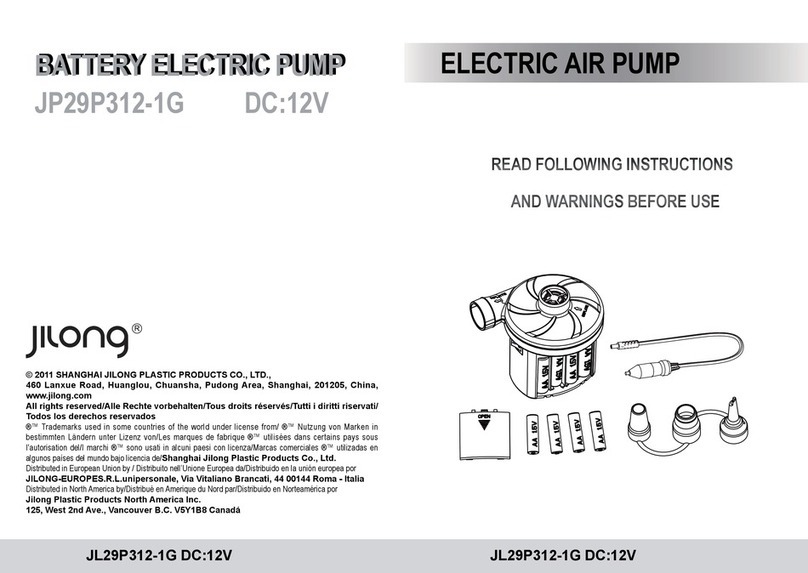
Jilong
Jilong JP29P312-1G instructions
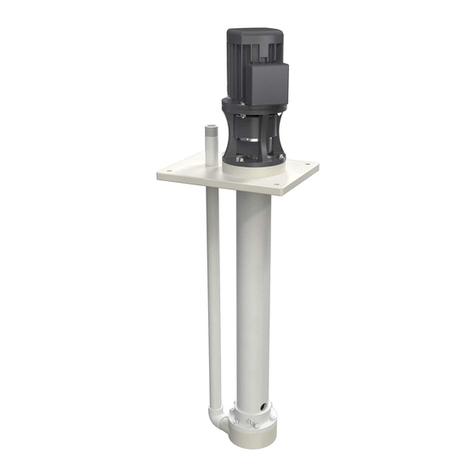
Debem
Debem IM 80 Instructions for use and maintenance
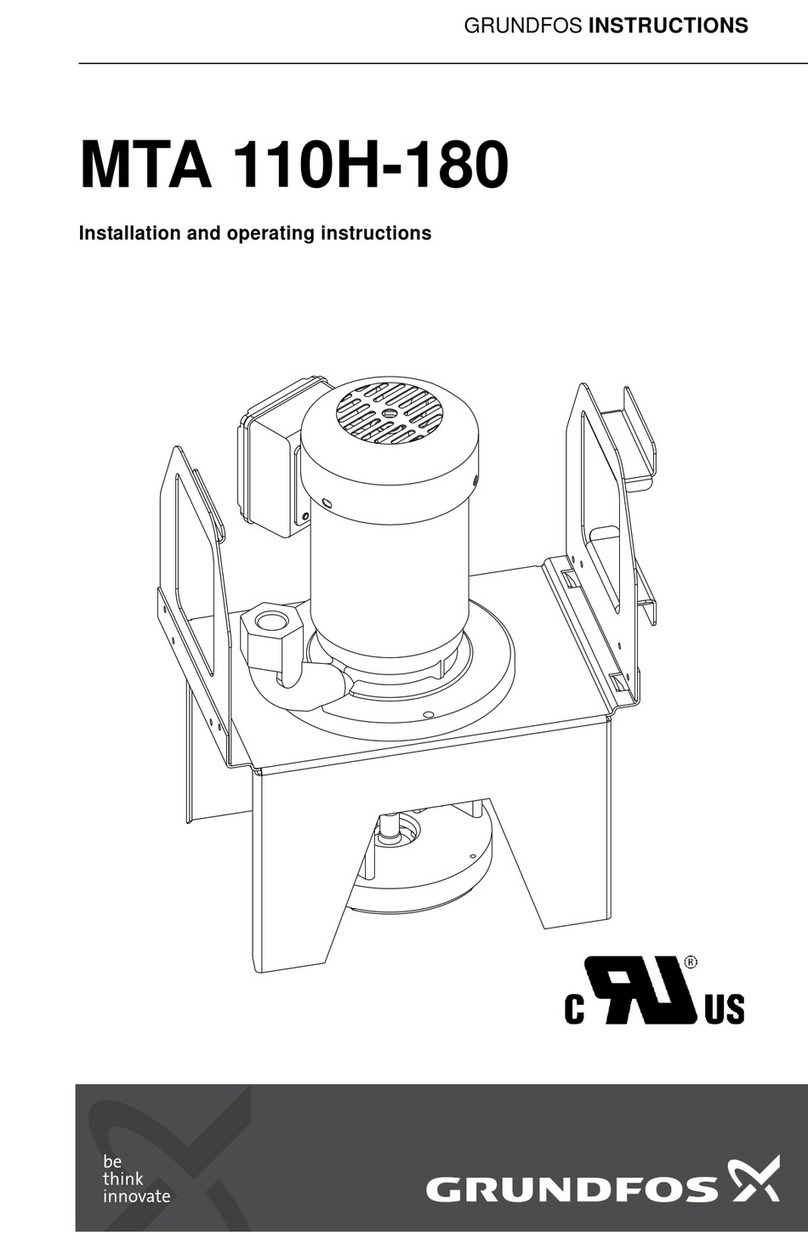
Grundfos
Grundfos MTA 110H-180 Installation and operating instructions
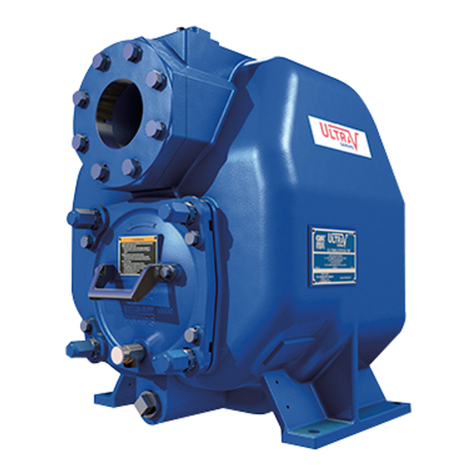
GORMAN-RUPP PUMPS
GORMAN-RUPP PUMPS ULTRA V V3C60SC-B Series Installation, operation, and maintenance manual with parts list
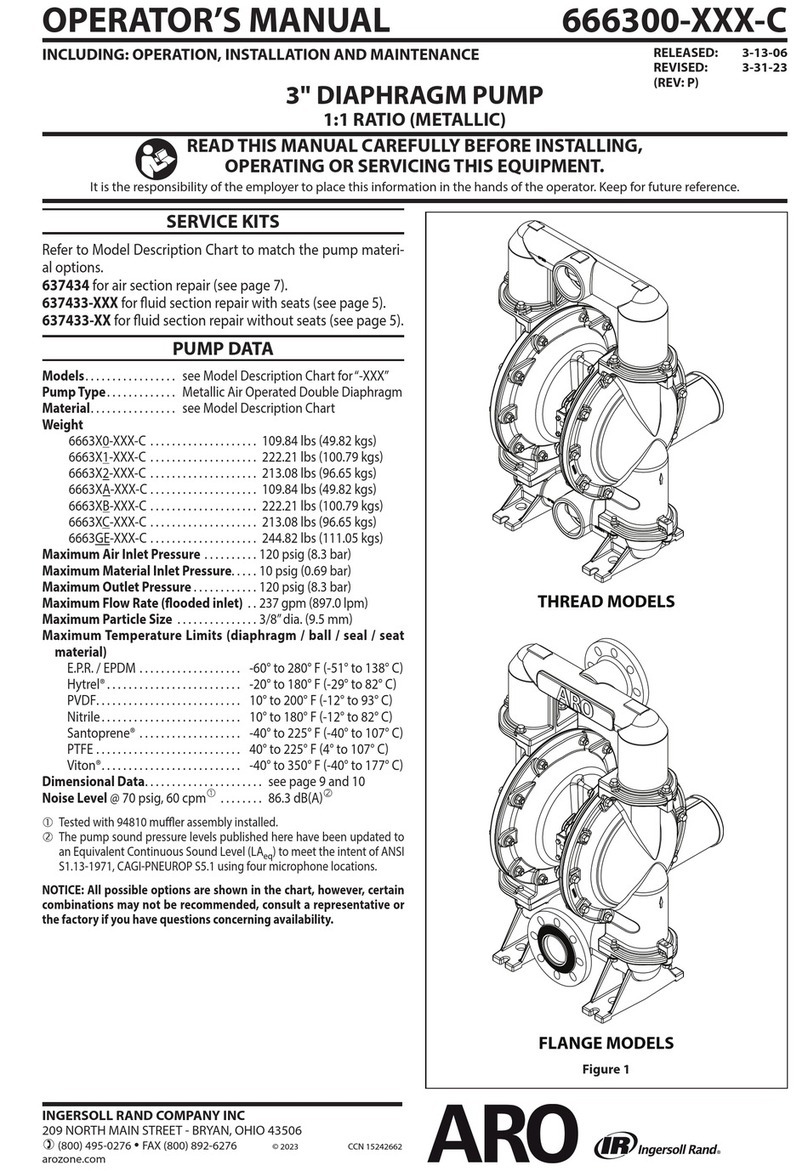
Ingersoll-Rand
Ingersoll-Rand ARO 666300 C Series Operator's manual

